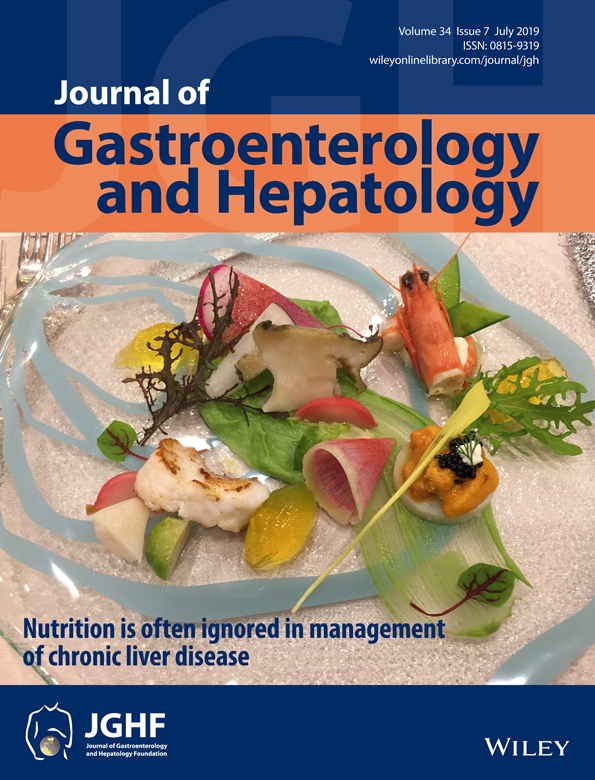The relationship between a cirrhosis-specific comorbidity scoring system and healthcare utilization patterns
Abstract
Background and Aim
Patients with liver cirrhosis are impacted by comorbidities that affect healthcare utilization and survival. The study objective was to assess the relationship between a cirrhosis-specific comorbidity scoring system (CirCom) and healthcare utilization among patients with cirrhosis.
Methods
A retrospective cohort analysis was conducted using electronic medical records from a large academic-based healthcare network. Patients aged 18–90 years with at least one International Classification of Diseases, Ninth Revision, Clinical Modification diagnosis code for cirrhosis (571.2/571.5) between 2009 and 2014, and at least 180 pre-index and 365 days of post-index electronic medical record data were included. Patients were assigned CirCom scores based on comorbidities observed at/before index cirrhosis diagnosis. All-cause/cirrhosis-specific outpatient/hospital utilization was assessed post-index diagnosis across 1 year. Predictors of utilization (age, sex, race, body mass index, etiology, Model for End-stage Liver Disease, and CirCom) were assessed using negative binomial and Poisson regression with robust standard errors.
Results
A total of 957 patients were included. Healthcare utilization according to CirCom demonstrated a positive linear relationship for both all-cause outpatient/hospital utilization, but no relationship was evident for cirrhosis-specific utilization. Increased CirCom was associated with an increased risk of all-cause utilization for both outpatient (relative risk [RR]: 1.75; 95% confidence interval [CI]: 1.47–2.07) and hospital (RR: 1.71; 95% CI: 1.38–2.12) utilization. However, CirCom showed a statistically non-significant association for cirrhosis-specific outpatient (RR: 1.08; 95% CI: 0.91–1.29) and cirrhosis-specific hospital (RR: 0.87, 95% CI: 0.67–1.13) utilization.
Conclusions
CirCom failed to predict cirrhosis-specific healthcare utilization but did positively predict all-cause utilization for both outpatient and hospital services and therefore may be useful in risk assessment and management of cirrhosis.




